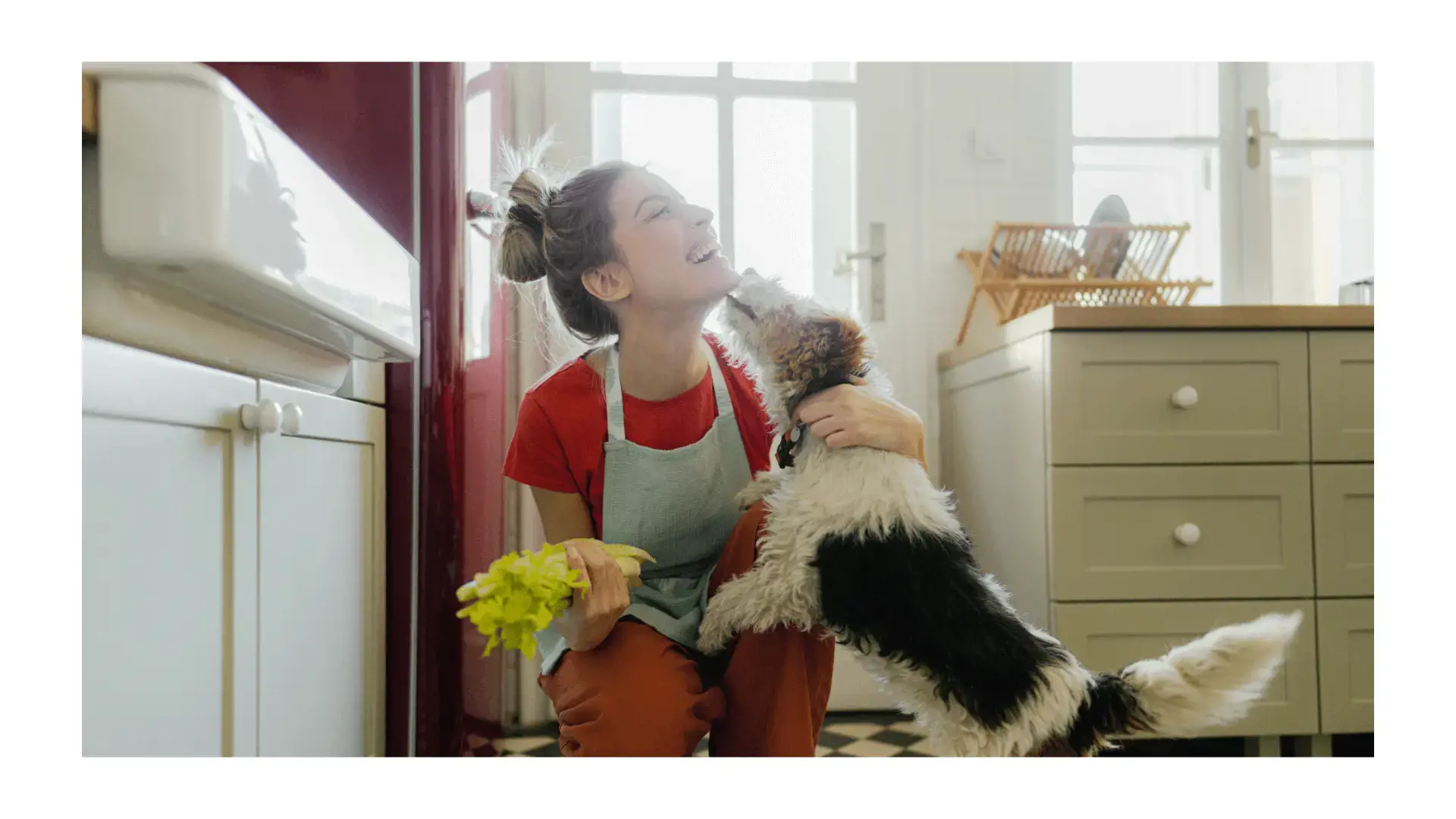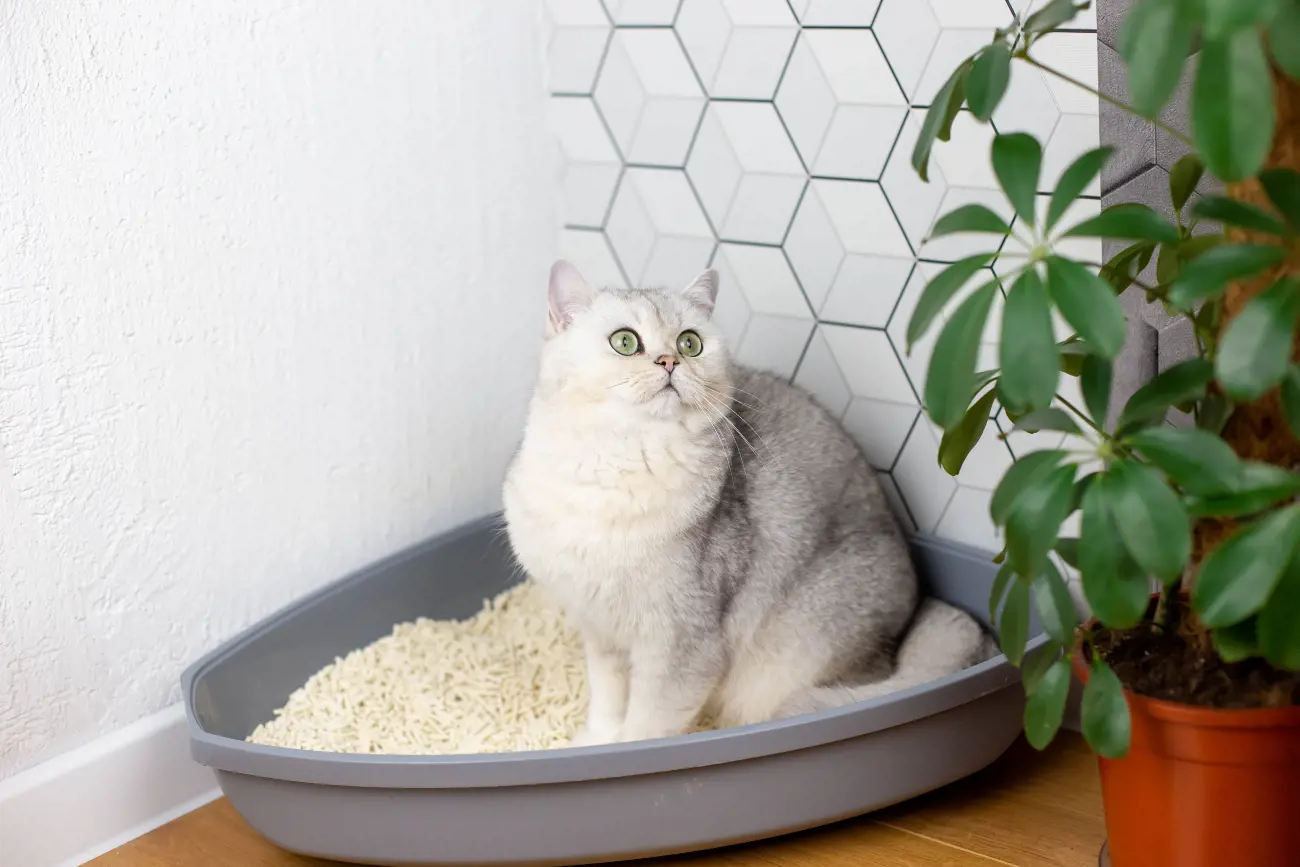How to train your dog to wear a muzzle
19th March, 2021

Dog muzzles get a mixed response from people, but they are really handy for dogs that might be a bit nervous or short-tempered when they’re out and about.
Of course, muzzles are used to help prevent a dog from biting – that's why, for many people, muzzles conjure up images of snarling, aggressive dogs. There's a certain stigma associated with a dog wearing a muzzle, and an assumption that the dog must be dangerous.
However, there are many other reasons for a dog to wear a muzzle. They are sometimes necessary at vet appointments, for example, and certain types of dog are required by law to wear a muzzle when out in public – regardless of the animal's history.
Let's take a closer look at why your dog might need to wear a muzzle, how to find the right one for your pet, and how to help them get used to wearing one.
Wearing a muzzle is just one way to protect your pup from accident or injury – another is to have award-winning insurance for a dog from Purely Pets.
Why use a dog muzzle?
A muzzle can be helpful to keep everyone safe while you’re working to improve a dog’s social skills around people and other animals, or trying to manage aggressive tendencies.
Every dog has a bite threshold, the point at which he or she is stressed enough to bite, explains Best Friends Animal Society. Some dogs reach this point faster than others, but in all cases when reaching the bite threshold is possible, a dog wearing a muzzle is at much lower risk of hurting anyone else – canine or human.
Any dog may bite if it feels threatened, scared or angry. In previous blogs, we've advised on how to stop your dog from biting and mouthing and how to calm down an angry dog.
A muzzle can also be helpful if a dog needs space, as people tend to give canines a wide berth if they’re wearing a muzzle.
And it's worth bearing in mind that a muzzle protects the dog who’s wearing it, as an attack can potentially lead to your beloved pet being confiscated by the authorities and even put down.
Dog insurance can help you pay the vet's bills if your four-legged friend ever becomes poorly after eating something it shouldn't. But prevention is better than cure, and a muzzle can prevent your dog from consuming potentially dangerous objects, like stones or litter.
If your pup is recovering from an injury you might need to use a muzzle, as a dog that's feeling unwell or in pain can react aggressively even towards the people they know and love.
Some ex-racing greyhounds wear muzzles because they spend years chasing something small and furry, and that’s a hard habit to break, Purina points out.
It's also a good idea to teach your dog to be comfortable wearing a muzzle in case they need one for grooming or veterinary appointments. And remember, if your dog ever picks up an injury or becomes ill, dog insurance can help you cover the cost of treatment.
For some dogs, it's a legal requirement for them to wear a muzzle when you take them outside – and most of the time, it’s not because they’ve ever bitten anyone.
As Blue Cross explains, in the UK certain types of dog are illegal to own, breed, sell, abandon or give away. The four banned types are:
-
Pit Bull Terrier
-
Japanese Tosa
-
Dogo Argentino
-
Fila Brasileiro
Whether a dog is a banned type depends on what it looks like, rather than its breed, DNA testing or behaviour.
Owners who have been told their dog is one of these types can go to court to apply for an exemption order. This involves the animal undergoing a behavioural assessment to show that it's no danger to the public.
Dogs that pass this test must be:
-
Neutered
-
Microchipped
-
Muzzled and kept on a lead at all times when in public
-
Kept in a secure place so it cannot escape
Owners should consider having insurance against their dog injuring other people, but some insurance may exclude certain breeds of dog. Make sure you ask for more information when you get a dog insurance quote.

Do muzzles hurt dogs?
Canines can learn to feel comfortable wearing a muzzle, just like they learn to accept wearing their collar.
It's important to choose the right muzzle for your dog and train them gently over a period of time, making it a positive and fun experience.
Once your dog has learnt to love their muzzle, all the stress that often comes with wearing one goes away.
Choosing the right muzzle for your dog
Just like finding the right dog insurance, there’s no one-size-fits-all solution when it comes to buying a dog muzzle.
There are lots of different types of muzzle available online and from your local pet shop, so where do you start? As your dog may be wearing their muzzle a lot on walks and when you visit places, it's important to get something that will be comfortable for them.
A good muzzle will fit comfortably without obscuring your dog's vision or digging into their skin. It shouldn't stop your dog from opening their mouth, as it's important for them to be able to pant so they don't overheat.
It should be made of a durable material that's not going to break easily as this could potentially injure your dog, too.
Dogs Trust, Battersea Dogs & Cats Home, PDSA and Blue Cross are among the animal charities that recommend a basket-type muzzle, also known as a Baskerville.
"Its open basket weave allows the dog to breathe freely," says Blue Cross. "Other types of muzzles that completely close a dog’s mouth do not allow them to pant to lose heat."
A basket muzzle will also allow your dog to drink freely, and you can feed your dog treats while they are wearing it – something that makes training a whole lot easier.
The most important thing is to make sure that any muzzle you buy fits your dog correctly, avoiding chafing or irritation of their skin.
Manufacturers often provide a size chart and recommend a certain size for your breed, so check the packaging for a guide.
You can also measure your dog’s nose and then look up what size would be best for them. Do this at home, not in the pet shop.
You’ll need to measure around the widest part of their nose (which is usually just below their eyes). You’ll also need to measure the length of their nose, from the tip to the point just below the eyes.
With a basket muzzle, your dog should be able to open their mouth wide enough to pant and there should be a small space (around 1cm) between their nose and the end of the muzzle so it is not uncomfortable to wear. They should still be able to drink freely.
As well as making sure the muzzle is as comfortable as possible, a proper fit, using all the straps provided, will minimise the risk that the dog will be able to shake or paw the muzzle off.
The muzzle straps shouldn’t be too tight, either – when it's on, you should be able to slip one finger under the straps.
Once you've got a muzzle that's the correct size for your dog, you'll need to start reward-based training to get them used to wearing it.

Battersea’s advice for training your dog to wear a muzzle
It takes time and patience to get a dog comfortable with wearing a muzzle. The whole process might take a few weeks but shouldn’t be rushed.
When done correctly, your dog will learn to enjoy wearing the muzzle because they will associate it with fun and happy things.
The aim is to make wearing the muzzle a game that the dog likes to play.
Training should take place over a number of short sessions, ideally over a period of at least a few days, taking care to make sure your dog associates the muzzle with positive situations, advises Battersea.
The charity recommends a five-step approach to muzzle training your dog:
Step 1 – Introducing your dog to a muzzle
Put a treat in the muzzle, hold it in cupped hands and offer it to your dog. Allow them to take the treat from inside the muzzle.
Keep repeating this action until your dog is comfortable with it. Your dog will come to associate the muzzle with a treat dispenser after a while.
Once they’ve got the hang of it, start putting the treat further back, moving further into the muzzle each time.
Step 2 – Getting your dog comfortable with the muzzle
When your dog puts its head fully inside the muzzle, give them the treat from the outside in, so they still get their reward.
Battersea suggests you may find it easier to use a treat in a squeezy tube that will fit in the gaps of the muzzle such as a small amount of pâté or spreadable cheese.
Keep repeating this step until the dog naturally associates wearing the muzzle with getting a treat.
Step 3 – Introducing the straps behind the head
Again, get your dog to put their head into the muzzle using the treat technique. Once their head is in comfortably, lift up the straps behind their ears, but don’t fasten them yet.
They need time to get used to the feeling of this unfamiliar object on their head. Give them another treat so they associate the muzzle with something positive. Remove the muzzle and repeat a number of times, again ideally over a few sessions.
This will familiarise your dog with the sensation of the straps around their head without the muzzle being closed, says Battersea.
Step 4 – Fastening the muzzle
When your dog seems comfortable with the straps, fasten the muzzle properly. Reward your dog immediately and then calmly remove it again.
The key here is to move slowly to reduce the likelihood of your dog panicking. If this happens, go back a few steps and repeat the process again until the dog is happy and relaxed about having the muzzle on its face.
Then you can start extending the time between doing up the muzzle and giving them a treat, so eventually you won’t have to give the treat at all – unless you want to, that is!
Step 5 – Wearing the muzzle regularly
Like all dog training, repetition is key so make sure you use the muzzle regularly so your dog doesn’t forget the positive associations you’ve created with it.
Battersea suggests using the muzzle before you go for walks or even while you’re playing together at home or during training sessions so your pup always thinks of the muzzle as a fun, comfortable thing to wear.
Battersea has also produced a handy advice sheet featuring its muzzle training tips, along with a great video showing this advice in action.
Where should you use a muzzle?
When your dog is comfortable wearing the muzzle, you should be able to use it when you go out for walks.
If your dog only needs to wear their muzzle at the vets, PDSA recommends putting the muzzle on before you get there – ideally before leaving the house. Otherwise, they may get stressed and not want to wear it at all.
You should also continue to put the muzzle on for occasional walks, or other enjoyable activities, so that they don’t learn that their muzzle coming out always means they’re going to the vet.
Dog insurance with Purely Pets
If you have to take your dog to the vet, the costs can add up very quickly, especially if they need emergency treatment. That's where dog insurance comes in.
Dog insurance from Purely Pets can help provide reassurance that if your dog is unwell or injured, you’re able to provide the care they need to make a swift recovery.
We offer 15 levels of Lifetime cover and direct payment to your vet.
And with online policy management and online claims, you can manage your policy at a time that suits you.
Got a question about your pup? Our 24-Hour Vet Helpline is here to give you professional advice.
Our Gold products have been awarded a 5* Defaqto rating for 2021. So why not get a quote for dog insurance today?
Policy benefits, features and discounts offered may very between insurance schemes or cover selected and are subject to underwriting criteria. Information contained within this article is accurate at the time of publishing but may be subject to change.
Helpful Pages
Recent Posts

Cook for your Pet Day!
29/10/25
Why do Labradors always look sad?
16/10/25
How to treat a dog with a cold
08/10/25Pet Insurance Quote
- 98% claims paid *
- Claims paid directly to vets
- 24/7 vet video consultations
- Interest free monthly payments

